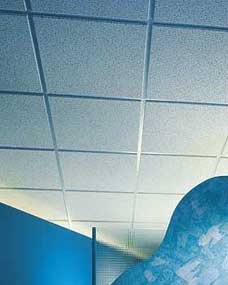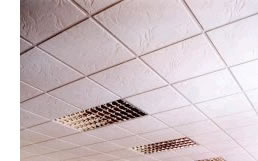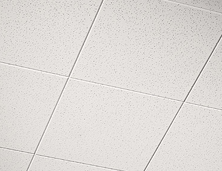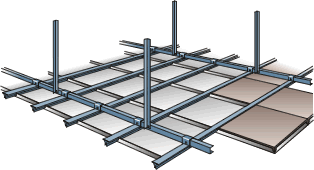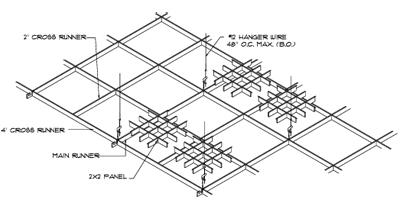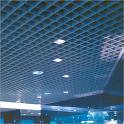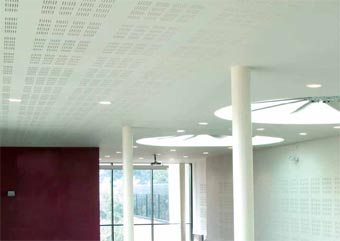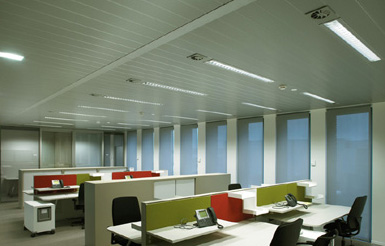|
|
 |
|||
|
As your satisfaction is of paramount importance, we aim to inform you on the best products that are available for the job in hand. We are happy to advise on which systems offer the best functionality/performance, durability and cost effectiveness. For example ceilings that are particularly suitable for use in high humidity areas such as kitchens or showers, or have superior acoustic properties for use in schools and offices. There may also be a requirement for structural fire protection in residential apartments, or a hospital, with 1/2hr or 1hr rating being achievable.
The Five Main Types of Suspended Ceilings 1. Exposed grid and tile systems (Tegular, Micolook or SE Panels).
Main Manufacturers: Armstrong ‘Dune’, ‘Tatra’, etc; USG Donn ‘Radar, ‘Olympia’ etc; Owacoustic: Harmony / Luna / Combed etc; Rockfon: ‘Koral’, ‘Pacific’, ‘Scholar’, ‘Hygenic’, etc; Ecophon ‘Gedina’, ‘Focus’, ‘Master’; Treetex: ‘Spintone’ ‘Sahara’, ‘Superior Plain’, ‘Mezzanine’, ‘Acoustimax’, ‘Aquamax
This is the most popular type of suspended ceiling. The tiles can be easily removed in order to provide access to the void. This is the most economical type of ceiling to use in most situations. A metal 'T' grid system is suspended from the soffit of the building using galvanized wires or angle and the panels are then laid into the grid. Both panels and grid are available in various colours and styles.
2. Concealed grid and tile systems.
For example: Rockfon ‘Sonar D’ A special grid system is suspended from the soffit of the building using galvanized wires or angle and the panels are fixed to the system using slots machined into their sides. Concealed systems are generally less adaptable than exposed systems and the void above is non-accessible. Concealed grid systems form a monolithic effect giving a clean unbroken vista. These systems are generally more expensive than exposed type ceilings.
3. Open cell (concealed or exposed grid systems).
Main Manufacturers: Armstrong ‘Cellio’, Hunter Douglas ‘Open Cell’. These type of panels are formed from cells eg. 50x50mm or 150x150mm, manufactured mainly from steel or aluminium and incorporated within a grid system. Mechanical and electrical services can easily be accommodated into the apertures or cells. Visually very attractive.
4. Suspended Membrane Systems (M/F plasterboard ceilings).
A special grid system is suspended from the soffit of the building using galvanized angle and the panels are screw fixed to the face of the system. The resulting membrane is then usually drylined and decorated, offering a finished appearance similar to a conventional plastered ceiling. Curves, bulkheads, skylights and other architectural features, along with M&E services can easily be incorporated into the ceiling.
5. Metal Pan / Linear Tray Systems
A special grid system is suspended from the soffit of the building using galvanised wires or angle and the metal panels clipped to the system. The panels can be in the shape of a conventional modular 600x600 or 1200x600mm ceiling tile, or in linear strips that are several meters long. The grid components are concealed, but the systems are very adaptable with the void above being easily accessible. Metal pan/linear tray systems can form a monolithic effect giving a clean unbroken appearance with a high level of accessibility.
|
| [Home] [About Us] [Contact Us] [Health and Safety] [Environment] [Ceilings] [Partitions] [Computer Floors] [Fire Protection] [Glass Block Walls] [Client References] [Charity Support] | |||
|
. |
|||
